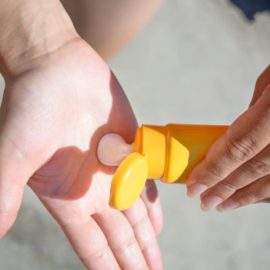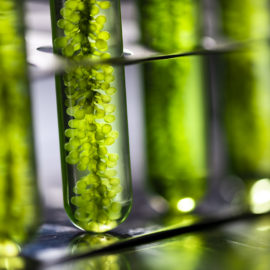The skin, through its barrier structure, provides the body with protection both against environmental threats (like microorganisms or UV radiation) and inner factors (such as inflammation). Skin also plays a key role in preventing dehydration, becoming a fundamental organ that should be cared for. Understanding the role of the skin barrier in general, and tight junctions in particular, in supporting healthy skin should not be underestimated.
The main protective elements in the skin are the stratum corneum and cell junctions. The latter’s role in maintaining a healthy skin barrier was ignored for a long time and it’s only lately that their importance has been acknowledged.
These junctions are defined by Brandner JM as “complex cell-cell junctions” whose function is to form a barrier in the stratum granulosum in mammal skin. As well as being part of this barrier, cell junctions also perform a dynamic interaction with other parts of the skin, thus becoming an essential element of the skin’s barrier structure.
However, many processes such as aging and different imbalances cause disturbances throughout the components of the skin barrier, including its structure, its permeability, hydration, and antimicrobial barrier, as proven by Eung Ho Choi.
Active ingredients that target cell junctions provide a comprehensive treatment to reinforce their skin barrier and cohesion role, thus working towards healthier and rejuvenated skin.
Content
The importance of tight junctions
There are a number of skin pathologies related to a dysfunction of cell junctions, as found by JM. Brandner et al.: contact dermatitis or atopic dermatitis, ichthyosis (neonatal & vulgaris) and psoriasis are all skin conditions related to a debilitated skin barrier and compromised cell junctions.
Research conducted by Matthias Schmuth et al. has also found how impaired skin barrier function is associated with skin disorders such as ichthyoses, eczema, or psoriasis.
What’s more, dry skin, which is a frequent condition for the general adult population, can also have its roots in a weakened skin barrier. This condition has also been found to worsen with age by M. Agustin et al.
These are all different skin disorders that impair the skin’s main role as a barrier, while also generating diverse aesthetic issues and health problems with varying degrees of severity. When finding the right therapy for these common skin conditions, creating tight junctions is especially relevant. This is because of their central position in the stratum granulosum, and their quick reaction to stimuli, as found in research by Katja Bäsler et al.
This knowledge provides brands with remarkable prospects for addressing consumers’ skin care needs, creating tight junctions that support skin health.
However, the winning formula will not only have to be safe and efficient but also focussed on new skin care narratives that respond to consumers’ demand for natural ingredients and responsible sourcing. A number of reports continue to demonstrate the public’s growing tendency towards sustainability as a global trend, as confirmed in research performed by Mintel. Two stats exemplify this: in the UK, 79% of adults feel “personal care and beauty brands need to put more effort into ethical and sustainable product production”; while, in China, 68% of adults want “brands and companies to support environmental sustainability.”
Hydrafence™: The natural active ingredient to develop a healthy skin
Hydrafence™ is a moisturizing agent that works by reinforcing the barrier effect and enhancing the protective power of tight junctions. Hydrafence™ showed a clear modulating effect on various genes that produce the proteins involved in the formation of the three defensive barrier structures of the skin: stratum corneum, the cell junction barrier, and the antimicrobial barrier.
Thus, this active ingredient goes beyond simply hydrating the skin: it modulates the expression of genes involved in hydration and cellular cohesion, building up the skin’s wall protector and increasing epidermis cohesion.
Extracted from the calcium-rich Lithothamnion calcareum algae, Hydrafence™ also provides an alternative built with sustainable sourcing in mind. While this species of algae forms part of Maerl beds, which are of high ecological importance, Provital obtains Lithothamniom calcareum through sustainable harvesting, following the OSPAR Convention standards.
No comments yet
There are no comments on this post yet.






Leave a comment